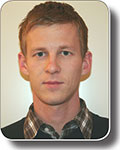Closed loop glycol systems—experience from BP’s Shah Deniz gas export project and advances in technology
Anthea Condilis A , Jon Even Vale B and Tor-Erik Stranna BA Aker Kværner Australia
B Aker Kvaerner Process Systems, Norway
The APPEA Journal 48(1) 249-260 https://doi.org/10.1071/AJ07016
Published: 2008
Abstract
Aker Kværner Process Systems (AKPS) in Norway provided the monoethylene glycol (MEG) regeneration unit for BP’s Shah Deniz Gas Export Project. Design by AKPS began in 2003. The MEG unit was installed by May 2006 at the Sangachal Terminal outside Baku, Azerbaijan. MEG injection was selected to prevent hydrate formation in the pipelines conveying gas and condensate from the Shah Deniz gas field in the Caspian Sea to the onshore terminal. This MEG unit employs full stream reclamation, where reclamation (salts removal) is integrated into the reconcentration process (water removal).
The commissioning of this MEG unit by BP was completed by November 2006 and the start-up phase was complete by May 2007. The chemistry of the MEG system was evaluated by AKPS during this period. Improved understanding of the chemistry has led to advances in the design of subsequent MEG units by AKPS.
Two fundamental improvements are proposed for future MEG unit designs. One fundamental improvement is the use of a slip stream reclaimer for salts removal. Consequently, the reconcentration operation is not dependent on the operation of the reclaimer, greatly improving the availability and flexibility of the system. Another consequence of slip stream reclamation is the significant reduction in size of the reclaimer, and with this comes reduced capital investment and improved maintainability.
The second fundamental improvement is the inclusion of pre-treatment operations for controlled precipitation and removal of low solubility salts originating from formation water and pipeline corrosion. Together with careful consideration of chemical additions to facilitate this precipitation, this design improvement is expected to prevent scaling in the downstream equipment. The function of the reclaimer is primarily to remove high solubility salts (chlorides).
Improvements in the design of MEG regeneration units that are described above and the motives behind them are explored in detail.

Anthea Condilis is a process engineer at Aker Kværner Australia (AKA). Experiences at AKA have included work for an Indonesian gold plant and an Indian onshore gas terminal. Ms Condilis joined the hydrate inhibition team at Aker Kværner Process Systems (AKPS) in Oslo in 2007, assisting with the detailed design of MEG regeneration units. Previous to AKA, Ms Condilis managed the production at the then Orica Adhesives and Resins plant near Melbourne. Ms Condilis qualified with a Bachelor of Engineering with Honours (Chemical) and Bachelor of Science (Biotechnology) from The University of Melbourne in 2000. Anthea.Condilis@akerkvaerner.com |

Jon Even Vale is a senior process engineer for Aker Kværner Process Systems (AKPS) in Norway. Mr Vale has been working with process design of oil and gas installations since 2002 and has been involved with the design of MEG regeneration systems since 2003. Mr Vale took part in the commissioning and start-up of the Shah Deniz MEG regeneration plant in Azerbaijan in 2006–7. Mr Vale was educated at the Department of Chemical Engineering at the Norwegian University of Science and Technology (NTNU) in Trondheim in 2000. Jon-Even.Vale@akerkvaerner.com |

Tor-Erik Stranna is product and technology manager for hydrate inhibition in Aker Kværner Process Systems in Norway. He has 27 years experience in the upstream oil and gas industry including front end studies, systems and process design, commissioning, and start-up of various production facilities in the North Sea and internationally. Tor-Erik.Stranna@akerkvaerner.com |


